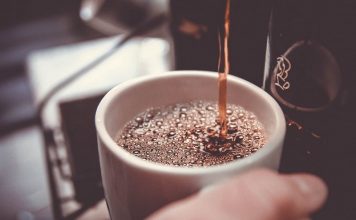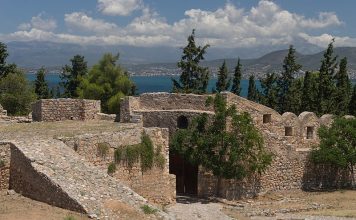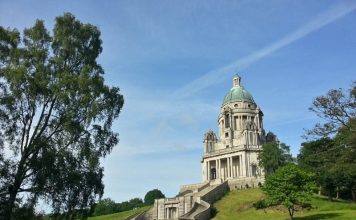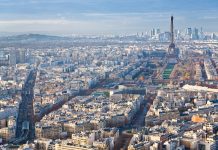What is Milan Known For?
Milan is a city in northern Italy that is famous for many things, such as:
- Fashion: Milan is one of the world’s fashion capitals, along with Paris, London, and New York. Milan hosts some of the most prestigious and influential fashion events, such as Milan Fashion Week and Milan Design Week. Milan is also home to some of the most renowned and iconic fashion brands, such as Armani, Prada, Versace, Dolce & Gabbana, and Gucci. Milan is a place where you can find the latest trends and styles in clothing, accessories, and jewelry.
- Art: Milan is a city of art and culture, with many museums, galleries, churches, and monuments that display some of the most famous and valuable artworks in the world. Milan is especially known for its masterpiece: The Last Supper by Leonardo da Vinci, which is located in the Santa Maria delle Grazie church. Milan also has other remarkable artworks, such as The Kiss by Francesco Hayez, The Basket of Bread by Salvador Dali, and The Fourth Estate by Giuseppe Pellizza da Volpedo. Milan is also a city of modern and contemporary art, with venues such as the Triennale, the Hangar Bicocca, and the Fondazione Prada.
- History: Milan is a city of history and heritage, with a rich and diverse past that spans from the ancient Roman times to the present day. Milan was once the capital of the Western Roman Empire, the Kingdom of Italy, and the Lombard League. Milan was also a center of learning and innovation, with figures such as Leonardo da Vinci, Alessandro Volta, and Alessandro Manzoni. Milan was also a city of resistance and liberation, with movements such as the Five Days of Milan and the Italian Resistance.
- Cuisine: Milan is a city of cuisine and gastronomy, with many dishes, drinks, and specialties that reflect its culinary tradition and diversity. Milan is famous for its risotto, a rice dish cooked with broth and cheese; its cotoletta alla milanese, a breaded veal cutlet fried in butter; its panettone, a sweet bread with candied fruits and raisins; and its cassoeula, a stew made with pork and cabbage. Milan is also famous for its coffee culture, with cafes such as Caffè Cova, Caffè Miani, and Pasticceria Marchesi.
Famous Drinks in Milan
Milan has a variety of drinks that reflect its history, culture, and taste. Some of the most famous drinks in Milan are:
- Campari: Campari is a bitter liqueur that originated in Milan in 1860 by Gaspare Campari. Campari is made from herbs, spices, fruits, and alcohol. Campari is usually served as an aperitif (a drink before a meal) or as a cocktail ingredient. Some of the most popular cocktails with Campari are Negroni (Campari, gin, and vermouth rosso), Americano (Campari, vermouth rosso, and soda water), and Spritz (Campari, prosecco, and soda water).
- Aperol: Aperol is another bitter liqueur that originated in Padua in 1919 but became popular in Milan in the 1950s. Aperol is made from oranges, herbs, and alcohol. Aperol is also served as an aperitif or as a cocktail ingredient. The most famous cocktail with Aperol is Aperol Spritz (Aperol, prosecco, and soda water).
- Sbagliato: Sbagliato is a cocktail that was created in Milan in the 1960s by mistake (sbagliato means “wrong” or “mistaken” in Italian). Sbagliato is made from Campari, vermouth rosso, and sparkling wine instead of gin (as in Negroni). Sbagliato is a refreshing and fizzy drink that is perfect for summer.
- Chinotto: Chinotto is a soft drink that was invented in Milan in 1932 by San Pellegrino. Chinotto is made from chinotto oranges, a type of citrus fruit that grows in Italy. Chinotto has a dark color and a bitter-sweet taste. Chinotto is often consumed as an alternative to cola or as a mixer for alcoholic drinks.
- Grappa: Grappa is a distilled liquor that is made from grape pomace (the leftover skins, seeds, and stems of grapes after wine making). Grappa can be clear or aged in wooden barrels to give it color and flavor. Grappa can be strong and harsh or smooth and aromatic, depending on the quality and type of grapes used. Grappa is usually served as a digestif (a drink after a meal) or as a coffee additive (caffè corretto).
Famous Sports in Milan
Milan is a city that loves sports and has many teams and events that represent it. Some of the most famous sports in Milan are:
- Football: Football is arguably the most popular sport in Milan, both among locals and visitors. Milan has two professional football teams: AC Milan and Inter Milan, which play in Serie A (the top division of Italian football). AC Milan and Inter Milan are two of the most successful and prestigious teams in the world, with 18 and 18 Italian championships, 7 and 3 European championships, and 3 and 3 FIFA Club World Cups, respectively. AC Milan and Inter Milan share the same stadium: San Siro, which has a capacity of about 80,000 seats. AC Milan and Inter Milan have a fierce rivalry, known as the Derby della Madonnina, which is one of the most anticipated and watched matches in Italy and the world.
- Basketball: Basketball is another sport that has a long history and tradition in Milan. Milan has one professional basketball team: Olimpia Milano, which plays in Lega Basket Serie A (the top division of Italian basketball) and EuroLeague (the top division of European basketball). Olimpia Milano is the most successful and decorated team in Italy, with 28 Italian championships, 6 Italian cups, 3 EuroLeague titles, and 4 FIBA Intercontinental Cups. Olimpia Milano plays at the Mediolanum Forum, which has a capacity of about 12,000 seats. Olimpia Milano has many loyal fans who support them at every game.
- Cycling: Cycling is a sport that has a strong connection to Milan and Lombardy. Lombardy is one of the most beautiful and scenic regions for cycling, with its mountains, lakes, plains, and forests. Lombardy has also produced some of the best cyclists in the world, such as Alfredo Binda, Fausto Coppi, Felice Gimondi, and Francesco Moser. Milan has hosted several cycling events, such as the Giro d’Italia (the most prestigious stage race in Italy) and the Giro di Lombardia (one of the five monuments of cycling). Cycling is also a popular recreational activity in Milan, as there are many bike rental shops and bike tours available.
- Calcio Fiorentino: Calcio Fiorentino is a sport that is unique to Florence but also played in Milan occasionally. Calcio Fiorentino is a combination of football (soccer), rugby, and wrestling that is played by four teams representing the four historical districts of Florence: Santa Croce (blue), Santo Spirito (white), Santa Maria Novella (red), and San Giovanni (green). Calcio Fiorentino is played on a sand-covered field with 27 players on each team who try to score goals by throwing a ball into a net at each end of the field. Calcio Fiorentino is a very rough and violent sport, as players are allowed to punch, kick, and tackle each other. Calcio Fiorentino is played only once a year, in June, with two semifinals and a final match. The winners receive a white calf as a prize.
- Skiing: Skiing is a sport that is not very common in Milan but can be enjoyed in the nearby Alps. The Alps are some of the most spectacular and challenging mountains for skiing, with many resorts, slopes, trails, and lifts. Some of the best ski destinations near Milan are Livigno, Bormio, Courmayeur, and Cervinia. Skiing is a fun and exhilarating activity that can be done by beginners or experts.
Famous Streets in Milan
Milan has some of the most interesting and iconic streets in the world, where you can find history, culture, entertainment, and shopping. Some of the most famous streets in Milan are:
- Via Montenapoleone: Via Montenapoleone is a street that runs through the heart of Milan and is known as the most elegant and fashionable street in the city. Via Montenapoleone is home to some of the most prestigious and luxurious brands in the world, such as Armani, Prada, Versace, Dolce & Gabbana, and Gucci. Via Montenapoleone is also lined with beautiful palaces and churches, such as Palazzo Bagatti Valsecchi, Palazzo Borromeo, and San Francesco di Paola.
- Corso Vittorio Emanuele II: Corso Vittorio Emanuele II is a street that connects Piazza del Duomo with Piazza della Scala, two of the most important and famous squares in Milan. Corso Vittorio Emanuele II is a pedestrian street that is always crowded with tourists and locals who enjoy its lively atmosphere and its many shops, cafes, restaurants, and cinemas. Corso Vittorio Emanuele II also has some historical and artistic attractions, such as Galleria Vittorio Emanuele II (a 19th century arcade that houses many luxury stores and restaurants), Palazzo Carminati (a neo-Renaissance palace that overlooks the Duomo), and Teatro alla Scala (the world’s most renowned opera house).
- Via Dante: Via Dante is a street that runs from Piazza Cordusio to Castello Sforzesco, two of the most significant and symbolic places in Milan. Via Dante is a pedestrian street that is named after the famous Italian poet Dante Alighieri, who lived in Milan for a period of his exile. Via Dante is a cultural and artistic street that hosts many events and exhibitions, such as the Festa del Naviglio (a festival that celebrates the Navigli canal system) and the Mercatino dell’Antiquariato (an antique market). Via Dante also has some notable buildings and monuments, such as Casa degli Omenoni (a 16th century palace with giant statues), Palazzo Carmagnola (a 15th century palace with a Gothic facade), and Torre dei Gorani (a medieval tower that was part of the city’s defensive walls).
- Via Torino: Via Torino is a street that runs from Piazza del Duomo to Porta Ticinese, two of the most vibrant and trendy areas in Milan. Via Torino is a shopping street that offers a wide range of products and prices, from high-end fashion to vintage clothing, from jewelry to books, from electronics to musical instruments. Via Torino is also a street of contrasts, as it mixes old and new, traditional and modern, sacred and profane. Some of the examples are Basilica di San Lorenzo Maggiore (a 4th century church that contains Roman ruins), Colonne di San Lorenzo (a row of 16 Roman columns that date back to the 2nd century), and Leoncavallo (a social center that hosts concerts, workshops, and debates).
FAQs about Milan
Here are some frequently asked questions about Milan:
- What is Milan’s nickname? Milan’s official nickname is “La Città della Moda” (“The City of Fashion”), which reflects its role as one of the world’s fashion capitals. Milan also has other nicknames, such as “La Città dei Navigli” (“The City of Canals”), “La Città Meneghina” (“The City of the People of Milan”), and “La Città del Duomo” (“The City of the Cathedral”).
- What is Milan’s motto? Milan’s official motto is “Esto perpetua” (“May it last forever”), which was adopted in 1860 after the unification of Italy. The motto expresses the city’s hope for its prosperity and longevity. The motto is also inscribed on the city’s coat of arms and flag.
- What is Milan’s flower? Milan’s official flower is the rose, which was chosen in 2004 by a public vote. The rose symbolizes love, beauty, and elegance. The rose also represents Saint Ambrose, the patron saint of Milan.
- What is Milan’s bird? Milan’s official bird is the magpie, which was designated in 2006 by a public vote. The magpie is a smart and curious bird that can mimic sounds and gestures. The magpie also symbolizes communication, creativity, and adaptability.















